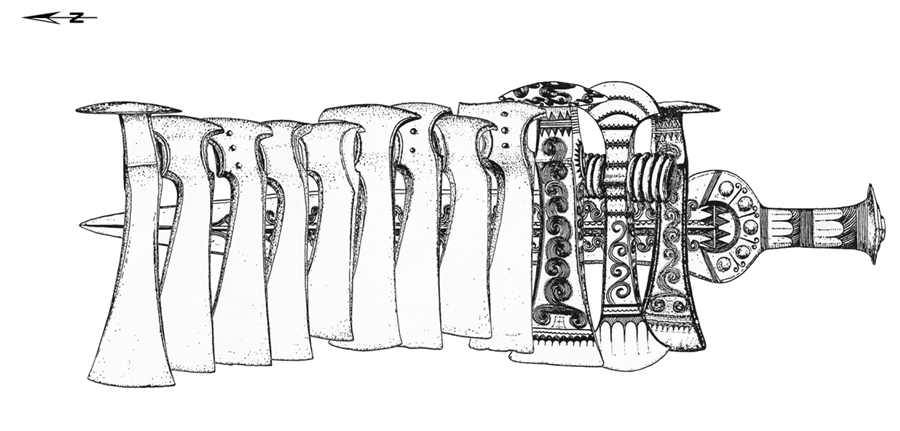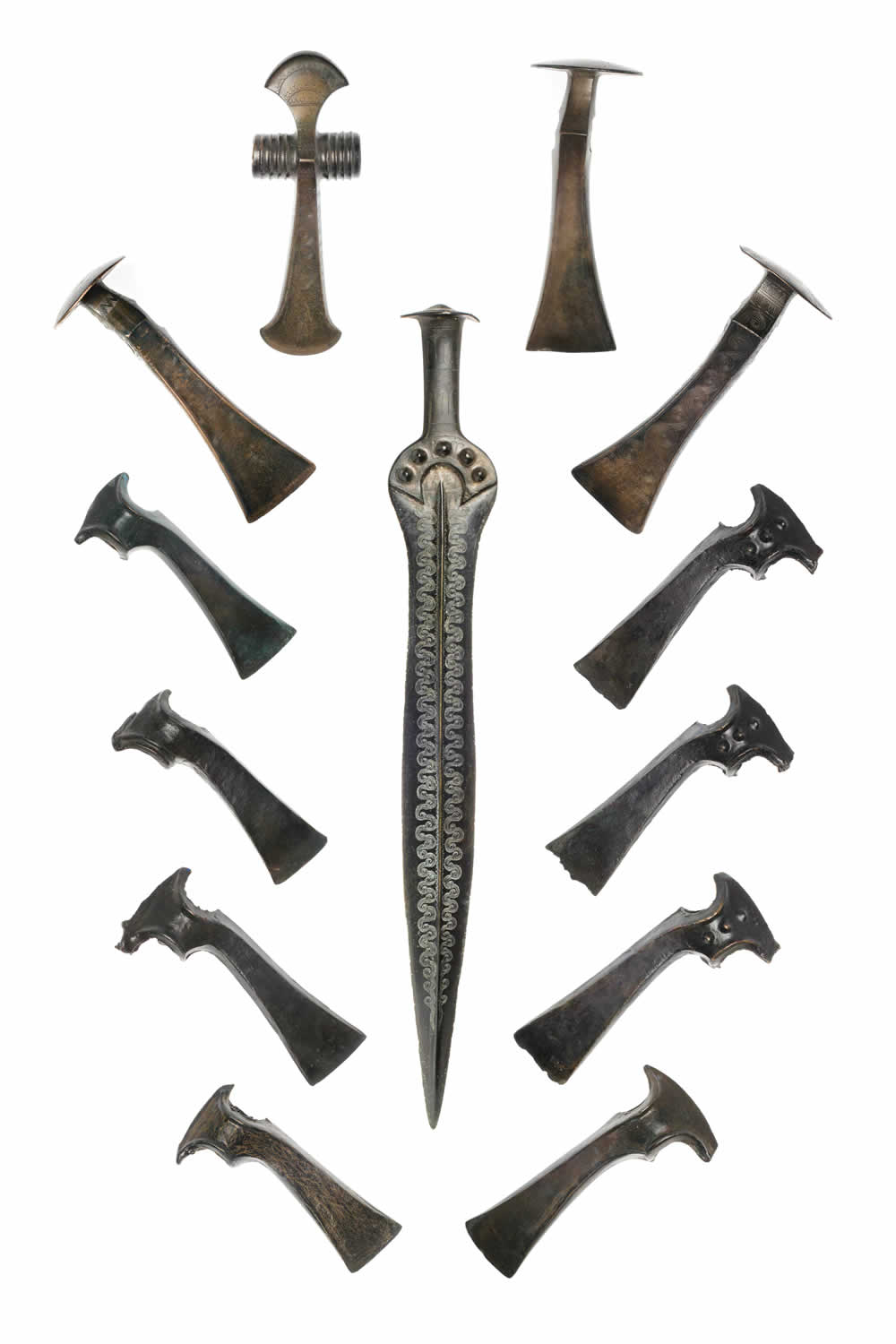The sword from Hajdusamson
The famous Bronze Age hoard from Hajdusamson was discovered in the early 20th century by labourers working in the vineyards about 3,5km north of Sámson, kom. Hajdú-Bihar, eastern Hungary. Along with twelve shaft-hole axes, the sword was found beneath 75 cm clean sand. The objects were carefully arranged, the sword lying flat with its point to the south, with the axes across the blade with their butts to the east.

Reconstruction, Meller 2013: Abb.11.
The sword and the hoard were presented to a western audience through a paper by J. Zoltai and V.G. Childe in 1928. Here, Childe found analogies for the sword among Scandinavian swords published by Montelius. The C-scroll ornament was defined as purely Carpathian.
It is commonly considered the first European sword north of Mycenaean Greece – dated to around 1600 B.C.
The Hajdusamson hoard was considered the first apex of a flourishing metal industry in the Carpathians, and the sword as the beginning of sword production north of Mycenaean Greece. The Carpathian sword was given precedence to Scandinavian and other European swords because of its location and proximity to Mycenaean style rapiers in Transylvania – closer to the source of inspiration. Most of the other swords in this early class are single findings, while the Carpathian swords, both Hajdusamson and Apa, were part of large multi-type hoards. This gave these swords a more solid chronological position. Here swords were linked to different kinds of battle axes, other findings linked the same types of battle axes to other categories. The Hajdusamson hoard contained disc-butted axes without spikes at the disc, while Apa have axes with such spikes. The Hajdusamson sword thus becomes the oldest of the Carpathian metal-hilted swords – and possibly the oldest in Europe.
This sword blade and hilt cast in one piece. The five protruding bosses is a stylistic tradition borrowed from the metal-hilted daggers further west. On the broader European scene, all variants can be found: all bosses are separate washers and rivets, bosses are not separate but has holes with narrow rivets, and fake bosses without rivets with rivets on each side.

Literature
Bona, I. 1975: Die Mittlere Bronzezeit im Karpathenbecken und ihre südöstlichen Beziehungen. Arch. Hung. N.S. 49. Budapest.
Childe, V.G. 1929: The Danube in Prehistory. Oxford.
David, W. 2002: Studien zu Ornamentik und Datierung der bronzezeitlichen Depotfundgruppe Hajdusamson-Apa-Ighiel-Zajta (1-2). Verlag ALTIP S.A. Alba Iulia.
Kemenczei, T. 1991: Die Schwerter in Ungarn II (Vollgriffschwerter) (1991). Prähistorische Bronzefund. IV.9. Franz Steiner Verlag.
Mozsolics, A. 1967: Bronzefunde des Karpatenbeckens : Depotfundhorizonte von Hajdusamson und Kosziderpadlas. Budapest.
Zoltai, L.1926: Two Bronze Hoards from Hajdusamson, near Debreczen (with note by V.V.Childe). MAN 26, 1926: 129-132.
|